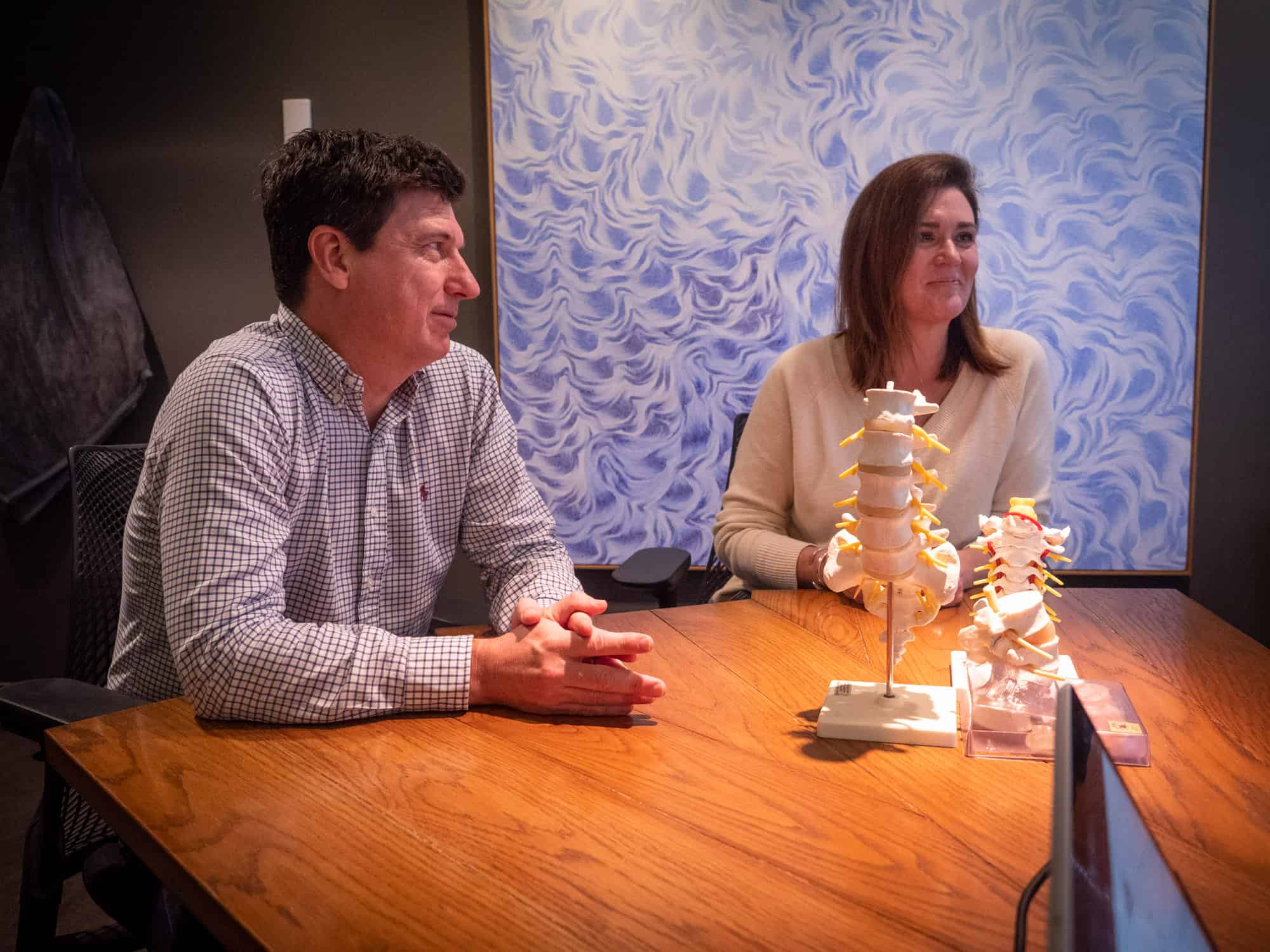What is a Selective Nerve Root Block?
A selective nerve root block is also called an image guided nerve sheath injection, or a foraminal epidural injection. A needle is inserted in the back and passed down next to the nerve in question. It is guided using an image intensifier or a CT scan to ensure the tip of the needle is accurately and safely placed. A mixture of local anaesthetic (usually Marcain) and steroid (usually Celestone) is injected around the nerve.
Why is a Selective Nerve Root Block done?
A selective nerve root block is often a diagnostic procedure. It can be used to determine whether a particular nerve is contributing to the pain problem. If a nerve is suspected to be compressed or irritated on clinical or radiological grounds, it can be temporarily numbed with a selective nerve root block. If the pain goes away temporarily, then the diagnosis is confirmed. The numbing effects usually last between 8 and 24 hours.
A selective nerve root block can also be used as a therapeutic procedure. Sometimes the steroid can have long-lasting effects in decreasing the pain level.
What happens during the procedure?
The procedure is usually performed by an interventional radiologist or pain specialist. You will be awake during the procedure and you will be lying face down or on your side. The skin will be cleaned and some local anaesthetic will be injected into the skin. A needle will then be passed down towards the nerve and checked repeatedly with x-ray. Once the needle is in place, the anaesthetic and steroid will be injected. Sometimes when the tip of the needle makes contact with the nerve, a sharp pain or electric shock will be felt in the arm or leg. This usually means that the needle has “hit the spot”.
You will be given a questionnaire to complete. This pain diary is important as it will help you remember exactly what effect the injection had in the first few hours so you can discuss it with your doctor at the next visit.
Once you are assessed as being safe to go home, you will be discharged. You will need someone to take you home as it is not safe to drive for approximately 12 hours after the procedure.
What are the complications?
It is possible to damage the nerve with the needle or injection. This risk is minimised by using image guidance and by slowly inserting the needle and checking its position repeatedly. In experienced hands, this risk is very rare. It is also possible to puncture the spinal lining or dura with the needle and cause a spinal fluid leak. Again, with careful guidance, this is an uncommon complication.
Occasionally, the injection can irritate the nerve temporarily and pain can worsen for a few hours. It is possible that the local anaesthetic effects can last longer than usual and arm or leg weakness can last more than one or two hours.
Although the steroid is only slowly absorbed by the body, sometimes it can affect the control of diabetes and cause a transient rise in blood sugar levels. It can also affect control of heart problems, such as heart failure and fluid retention. Very rarely, infection can occur around the site of the injection.
If you have any concerns about complications, you should contact the Radiology Department where the procedure was undertaken and talk to the medical or nursing staff.
